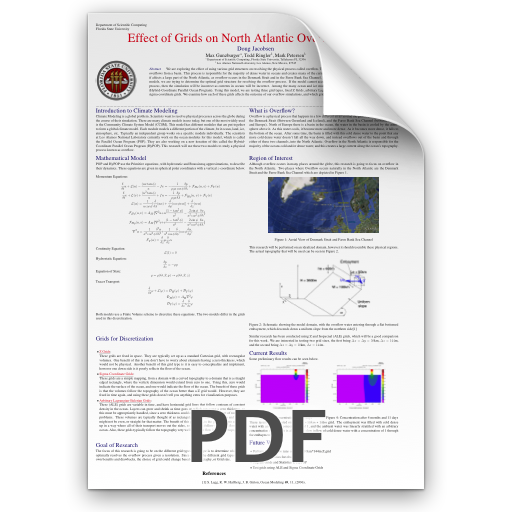
Effect of Grids on North Atlantic Overflow Simulations
Abstract
We are exploring the effect of using various grid structures on resolving the physical process called overflow. This is when dense cold water overflows from a basin. This process is responsible for the majority of dense water in oceans and creates many of the currents in oceans. In particular, if affects a large part of the North Atlantic, as overflow occurs in the Denmark Strait and in the Faroe Bank Sea Channel. Since there are many ocean models, we are trying to determine the optimal grid structure for resolving the overflow process. If the model cannot accurately resolve the overflow process, then the simulation will be incorrect as currents in oceans will be incorrect. Among the many ocean and ice models in use today is HyPOP (Hybrid-Coordinate Parallel Ocean Program). Using this model, we are testing three grid types, fixed Z Grids, arbitrary Lagrangian-Eulerian grids, and sigma-coordinate grids. We examine how each of these grids affects the outcome of our overflow simulations, and which grid gives the optimal results.

